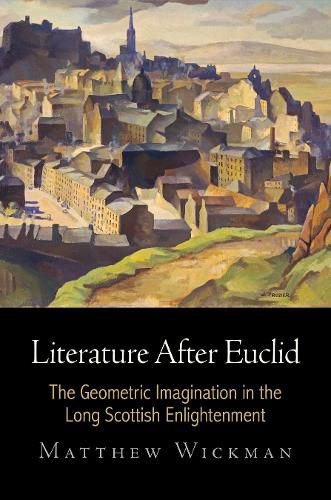Readings Newsletter
Become a Readings Member to make your shopping experience even easier.
Sign in or sign up for free!
You’re not far away from qualifying for FREE standard shipping within Australia
You’ve qualified for FREE standard shipping within Australia
The cart is loading…






What if historical fiction were understood as a disfiguring of calculus? Or poems enacting the formation and breakdown of community as expositions of irrational numbers? What if, in other words, literary texts possessed a kind of mathematical unconscious?
The persistence of the rhetoric of two cultures, one scientific, the other humanities-based, obscures the porous border and productive relationship that has long existed between literature and mathematics. In eighteenth-century Scottish universities, geometry in particular was considered one of the humanities; anchored in philosophy, it inculcated what we call critical thinking. But challenges to classical geometry within the realm of mathematics obligated Scottish geometers to become more creative in their defense of the traditional discipline; and when literary writers and philosophers incorporated these mathematical problems into their own work, the results were not only ingenious but in some cases pioneering.
Literature After Euclid tells the story of the creative adaptation of geometry in Scotland during and after the long eighteenth century. It argues that diverse attempts in literature and philosophy to explain or even emulate the geometric achievements of Isaac Newton and others resulted in innovations that modify our understanding of descriptive and bardic poetry, the aesthetics of the picturesque, and the historical novel. Matthew Wickman’s analyses of these innovations in the work of Walter Scott, Robert Burns, James Thomson, David Hume, Thomas Reid, and other literati change how we perceive the Scottish Enlightenment and the later, modernist ethos that purportedly relegated the classical Enlightenment to the dustbin of history. Indeed, the Scottish Enlightenment’s geometric imagination changes how we see literary history itself.
$9.00 standard shipping within Australia
FREE standard shipping within Australia for orders over $100.00
Express & International shipping calculated at checkout
What if historical fiction were understood as a disfiguring of calculus? Or poems enacting the formation and breakdown of community as expositions of irrational numbers? What if, in other words, literary texts possessed a kind of mathematical unconscious?
The persistence of the rhetoric of two cultures, one scientific, the other humanities-based, obscures the porous border and productive relationship that has long existed between literature and mathematics. In eighteenth-century Scottish universities, geometry in particular was considered one of the humanities; anchored in philosophy, it inculcated what we call critical thinking. But challenges to classical geometry within the realm of mathematics obligated Scottish geometers to become more creative in their defense of the traditional discipline; and when literary writers and philosophers incorporated these mathematical problems into their own work, the results were not only ingenious but in some cases pioneering.
Literature After Euclid tells the story of the creative adaptation of geometry in Scotland during and after the long eighteenth century. It argues that diverse attempts in literature and philosophy to explain or even emulate the geometric achievements of Isaac Newton and others resulted in innovations that modify our understanding of descriptive and bardic poetry, the aesthetics of the picturesque, and the historical novel. Matthew Wickman’s analyses of these innovations in the work of Walter Scott, Robert Burns, James Thomson, David Hume, Thomas Reid, and other literati change how we perceive the Scottish Enlightenment and the later, modernist ethos that purportedly relegated the classical Enlightenment to the dustbin of history. Indeed, the Scottish Enlightenment’s geometric imagination changes how we see literary history itself.